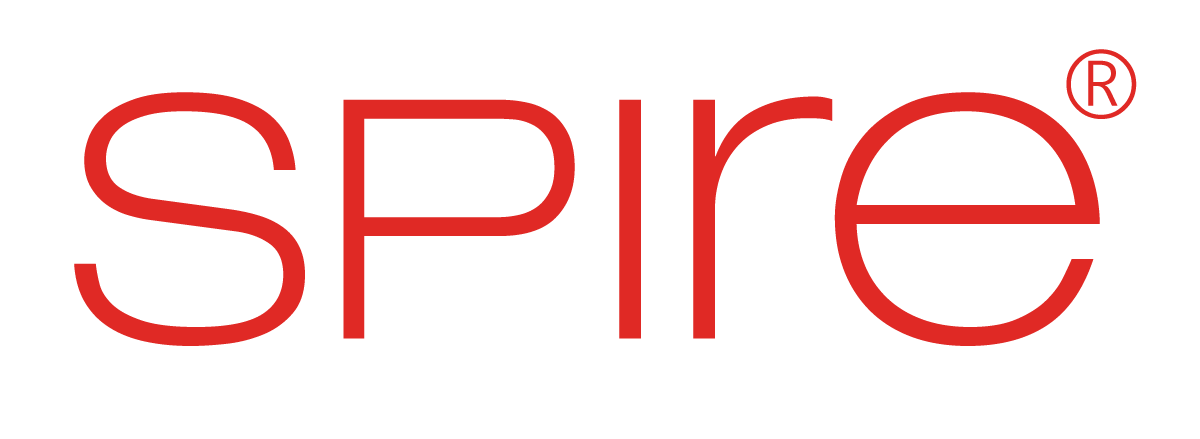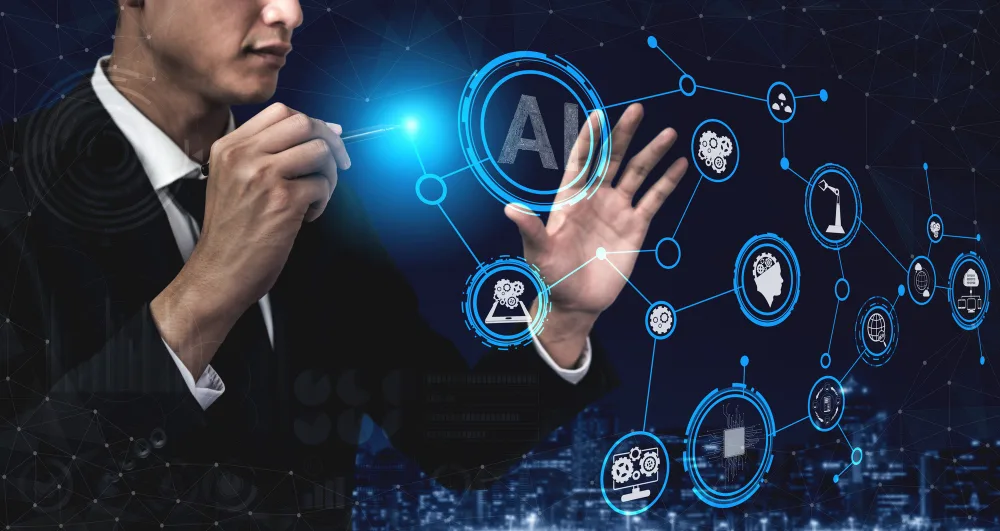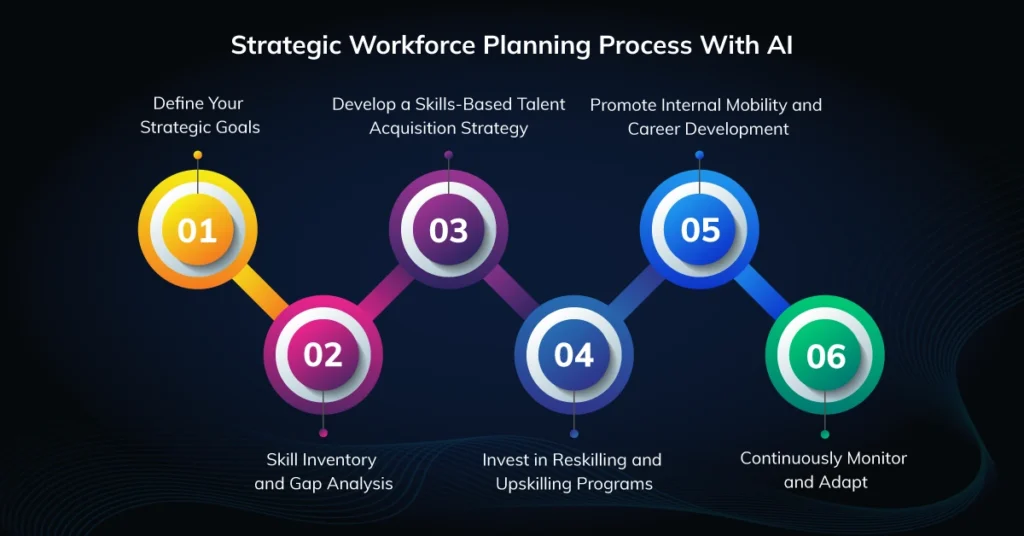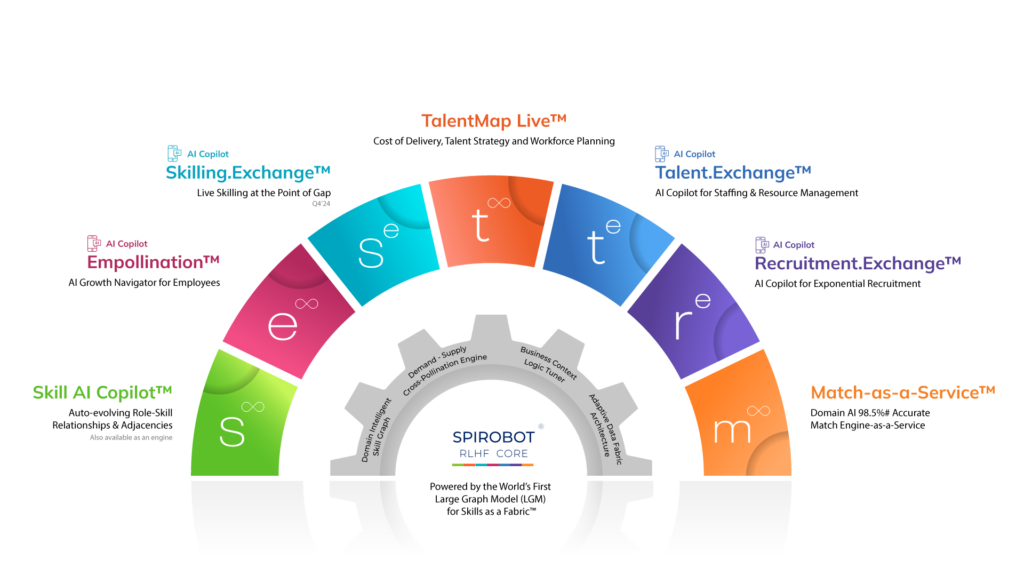Adapting and innovating have always been hallmarks of successful businesses. But in today’s rapidly evolving landscape, where new technologies emerge seemingly overnight and disrupt entire industries, the need for a strategic workforce planning approach to talent management has become paramount. For decades, leaders have recognized the importance of maintaining a workforce with the right skills to meet future challenges. However, effectively building and maintaining a skills-based workforce has proven elusive, often hampered by a lack of data-driven insights and the inability to anticipate future skill needs with certainty.
Visionary leaders have dreamt of a workforce built entirely on skills for decades. Imagine a world where every employee possesses the exact capabilities needed to excel in their roles, talent acquisition becomes a laser-focused search for specific skill sets, and development plans are tailored to individual needs. This utopia of a skills-based workforce has long been a goal, but data analysis and talent management limitations have kept it out of reach.
Artificial Intelligence (AI) steps in as a powerful ally, offering tools that transform how organizations approach strategic workforce planning. With AI, organizations can confidently unlock the ability to build a talent pipeline focused on the skills they’ll need to thrive, not just today but well into the future, empowering them to take control of their talent management strategies.
Let’s explore how AI can revolutionize strategic workforce planning and help you build a sustainable, skills-based workforce.
What is Strategic Workforce Planning?
Strategic workforce planning is a proactive and future-oriented approach to managing human capital. It involves analyzing your organization’s current and future skill needs, identifying potential talent gaps, and developing strategies to bridge them. Traditionally, SWP has been a complex and time-consuming process, often reliant on manual data analysis and intuition. However, the rise of Artificial Intelligence (AI) is revolutionizing how organizations approach workforce planning strategy.
Strategic workforce planning is a proactive and future-oriented approach to managing human capital.
It involves analyzing your organization’s current and future skill needs, identifying potential talent gaps, and developing strategies to bridge them.
Challenges of Workforce Planning and How AI Helps
Traditional workforce planning often faces several challenges:
- Data Overload: Organizations can access more than ever, but analyzing it effectively can be difficult. AI can help process large amounts of data and identify meaningful insights.
- Lack of Agility: The business landscape changes rapidly, and traditional workforce plans can become outdated quickly. AI can help organizations be more agile and responsive to change.
- Human Bias: Human decision-making can be subjective and biased. AI can help to remove bias from the workforce planning process.
By using AI, organizations can overcome these challenges and develop a more effective strategic workforce planning strategy.
The Strategic Workforce Planning Process with AI
AI enhances the strategic workforce planning process with the following:
- Future Skill Needs Analysis: AI can analyze vast amounts of data, including industry trends, job postings, and competitor analysis, to identify the skills in demand. This allows organizations to anticipate future skill needs and make informed talent acquisition and development decisions.
- Talent Gap Identification: AI can help you identify talent gaps by comparing your current workforce skills to your future skill needs. This could require more specific technical skills, soft skills, or leadership capabilities.
- Skills-Based Talent Pipeline Development: Once you know your talent gaps, you can use AI to develop a skills-based talent pipeline. AI can help you identify potential candidates on college campuses, in your existing talent pool, or even in the gig economy who possess the necessary skills.
- Reskilling and Upskilling Programs: AI can also be used to develop personalized reskilling and upskilling programs for your existing employees. These programs can help employees close skill gaps and prepare them for future organizational roles.
Strategic Workforce Planning Process with AI: A Practical Guide
While AI offers significant advantages in strategic workforce planning, implementing it effectively requires a well-defined approach. Here’s a breakdown of critical steps to consider:
- Define Your Strategic Goals: The first step is clearly defining your organization’s strategic goals. What are you aiming to achieve in the next 3-5 years? Understanding your overall business strategy will guide your talent needs.
- Skill Inventory and Gap Analysis: Next, conduct a comprehensive skill inventory. Utilize AI tools like Spire.AI’s automatic skill profile generation to understand the current skillsets of your workforce. Compare this with your future skill needs identified through AI-powered trend analysis. This will reveal any potential talent gaps.
- Develop a Skills-Based Talent Acquisition Strategy: Leverage AI-powered talent acquisition platforms that match job descriptions to relevant skills in candidate pools. This streamlines recruitment by focusing on candidates with the specific skills you need. Additionally, explore partnerships with universities and training providers to identify potential talent with the skills you’ll need in the future.
- Invest in Reskilling and Upskilling Programs: Remember to consider the value of your existing workforce. Utilize AI to recommend personalized reskilling and upskilling programs to bridge skill gaps within your current talent pool. This empowers employees and fosters a culture of continuous learning and development.
- Promote Internal Mobility and Career Development: An internal talent marketplace powered by AI can connect employees with internal opportunities aligned with their skillsets and aspirations. This increases employee engagement, reduces external hiring costs, and fosters a sense of career progression within your organization.
- Continuously Monitor and Adapt: The business landscape is constantly evolving. Use AI to monitor industry trends and skill demands continuously. Regularly revisit your strategic workforce planning strategy and adapt it based on new insights.
Benefits of Strategic Workforce Planning With AI
Strategic workforce planning with AI offers several advantages:
- Reduced Time to Hire: AI can quickly identify candidates with the right skills, streamlining the recruitment process and reducing time-to-hire.
- Improved Talent Acquisition Costs: Focusing on skills rather than experience can help you find qualified candidates from diverse backgrounds, potentially reducing recruitment costs.
- Increased Employee Engagement: Investing in reskilling and upskilling programs demonstrates your commitment to employee development, leading to increased employee engagement and loyalty.
- Enhanced Agility and Future-Proofing: AI-powered strategic workforce planning allows you to adapt your talent strategy to meet future skill demands and improve futurecasting initiatives, ensuring your organization remains agile and competitive.
Benefits of Strategic Workforce Planning With AI
– Reduced Time to Hire
– Improved Talent Acquisition Costs
– Increased Employee Engagement
– Enhanced Agility and Future-Proofing
Spire.AI: Strategic Workforce Planning Tools for Building a Skills-Based Workforce
Spire.AI is a leading provider of AI-powered talent management solutions. Spire.AI’s platform can help organizations’ strategic workforce management in several ways:
- Auto-Evolving Role-Skill Framework: Spire.AI uses AI to create a dynamic framework that identifies the skills required for every role within your organization. This framework adapts as your business needs evolve, ensuring that your talent planning is always up-to-date.
- Automatic AI-generated Employee Skill Profiles: Spire.AI can automatically generate employee skills profiles based on their work history, performance data, and other sources, for enhanced talent mapping. This gives you a clear picture of the skills you have within your organization.
- Career Path Simulation and Reskilling Recommendations: Spire.AI can help employees identify career paths within the organization and recommend reskilling opportunities to help them close skill gaps. This enables you to develop your existing talent and retain valuable employees.
- Talent Marketplace: Spire.AI facilitates an internal talent marketplace that connects employees with internal opportunities that match their skills and aspirations. This increases internal mobility and reduces the need for external hiring.
- Talent Acquisition: Spire.AI can help you find and attract top talent by matching your job descriptions to the skills of potential candidates. This reduces your hiring time and ensures you attract the best candidates for the job.
By using Spire.AI’s AI-powered platform, organizations can develop a strategic workforce planning strategy that is data-driven, agile, and future-proof. This will ensure that you have the right talent with the right skills to achieve your business goals in the ever-changing world of work.
Conclusion
The future of work demands a proactive approach to talent management. By leveraging AI to build a skills-based talent pipeline, organizations can bridge the skills gap, attract and retain top talent, and ensure they have the right people in place to achieve their strategic goals. With its ability to analyze vast amounts of data, identify future trends, and personalized learning paths, AI is a powerful tool for building a future-proof workforce.
Ready to build your skills-based talent pipeline? Explore how the Spire.AI domain intelligent platform can help you develop a data-driven strategic workforce planning strategy and empower your organization to thrive in the ever-changing world of work.







